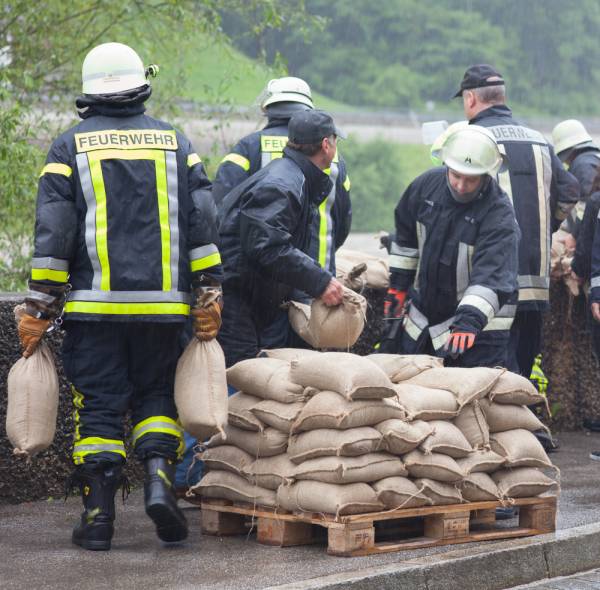Back pain is one of the most common forms of injuries, so it should not come as a shock that it is common among firefighters, too. The physical demands, coupled with previous injuries, and unhealthy habits will not only hinder a firefighter’s performance on the job, but can lead to an early retirement.
Back pain is one of the most common forms of injuries, so it should not come as a shock that it is common among firefighters, too. The physical demands, coupled with previous injuries, and unhealthy habits will not only hinder a firefighter’s performance on the job, but can lead to an early retirement.
A Back Injury Waiting to Happen
As a firefighter, for a 24-hour period, if you’re not working, then you’re sitting and waiting to work. Whether it’s the zero-to-100mph within seconds or the sedentary bouts between things hitting the fan, an unhealthy back is a recipe for disaster.
You can experience back pain when lifting a tool, patient, or dragging a hose line – or simply when you’ve been sitting too long and a prior strain kicks in.
The best thing a firefighter can do to avoid back pain is to prevent it from happening to begin with.
We all know that the core is important, yet we tend to avoid all things core when we’re at the gym. Then once we leave the gym, our diets do not reflect that of someone who is core-conscious. Then our shift starts, and it’s all downhill from there.
The following tips can help firefighters inside the gym, outside the gym, and at work.
Inside the Gym
The goal is to do functional lifts that mimic the movements you do on the job. Every lift should be focused on working the core in every plane of motion that it moves in.
Deadlifts: Stand with your feet shoulder-width apart, holding a bar at hip level in front of you. Keeping your lower back in its natural arch, bend at the hips and slightly at the knees until your upper body is parallel to the floor. Reverse the motion to return to the starting position. That’s one rep.
Glute Bridge: Lie on your back with bent knees and a barbell on your upper thighs. Push your feet into the ground as you squeeze your glutes and raise them until there is a straight line from your knees to your chin. Hold for a second and then return to the starting position.
Push Up: The pushup, executed correctly, is essentially a plank but better. Lie face down with your legs and arms extended in front of you, feet and hands shoulder-width apart. Your abs should be braced (as if someone is going to come and kick you), elbows back, and feet facing forward.
While keeping a straight line from the back of your head to your heels, lower yourself until your nose is an inch from the ground. Once there, explosively push yourself back up to the starting position.
Russian Twists with Medicine Ball: Grab a medicine ball. Sit with your legs in front of you, bent at the knees. With the ball in your hand, lift your feet about an inch off of the floor, so that you are balanced on your butt. Twist your entire upper body to the left. Now twist right past the starting position, so that you are now facing the opposite direction. Try to keep your feet off of the floor throughout.
Back Extensions: On a 45° raise (or back extension machine) come up until the back of your head is aligned with the heels of your feet as you stay neutral and never hyperextending your back.
Outside of the Gym
A major key to fighting against back pain will be to follow a good diet to avoid any excess weight. Most people will add extra weight to their joints and muscles, causing everything to work harder and imbalances to become more pronounced, which can all lead to injury.
Outside of the gym, try focusing on activities that can actually help speed up the healing process and loosen you up. A personal favorite is yoga, but even a light jog will help put your body into healing mode, not to mention burn some extra calories.
At Work
Once you’ve done all the preparing outside of work, do not take your back for granted once you get there.
Proper Lifting: When you’re on a fire call lugging things around, this is where doing functional exercises really benefit. Doing lifts like deadlifts, farmer’s carries, and twisting exercises should make your work routine a piece of cake. Recall your proper exercise form with every movement you do inside of the firehouse.
Personal Protective Equipment: If you’re wearing your SCBA be sure to loosen up the top straps, when applicable, to change the point of contact and relieving some pressure from your back. Also, when applicable, take your equipment off as soon as the scene is safe, rather than lugging all of it around.

Don’t be a tough guy. If you’re embarrassed or you let your ego get in the way you will get injured. If you need a hand, ask for one.
Back injuries might be common, for both those working in the firehouse and those who don’t. But they don’t have to be inevitable for anyone if you take the proper preemptive steps.
Photos courtesy of Shutterstock.






